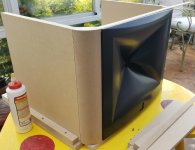academia50 ... the woofer I used is posted above ... 15pr400.
The heil is the original with the smaller throat. Diaphragms are new.
"What is your FR and SPL?" Not sure what you want here? Those measurements I posted were taken on that day. Like I said quick and dirty ... in untreated room ... on the floor ... no other EQ used except for what I posted.
Work in progress so, when I get them done, I'll start a thread with all details.
The heil is the original with the smaller throat. Diaphragms are new.
"What is your FR and SPL?" Not sure what you want here? Those measurements I posted were taken on that day. Like I said quick and dirty ... in untreated room ... on the floor ... no other EQ used except for what I posted.
Work in progress so, when I get them done, I'll start a thread with all details.
Wait a moment. I am the OP. I didn't know I was supposed to be making puppets! I thought this was a speaker building forum!
I need help with edge diffraction and speaker grills. I see so many speaker cabinets with grills like these, counter sunk in.
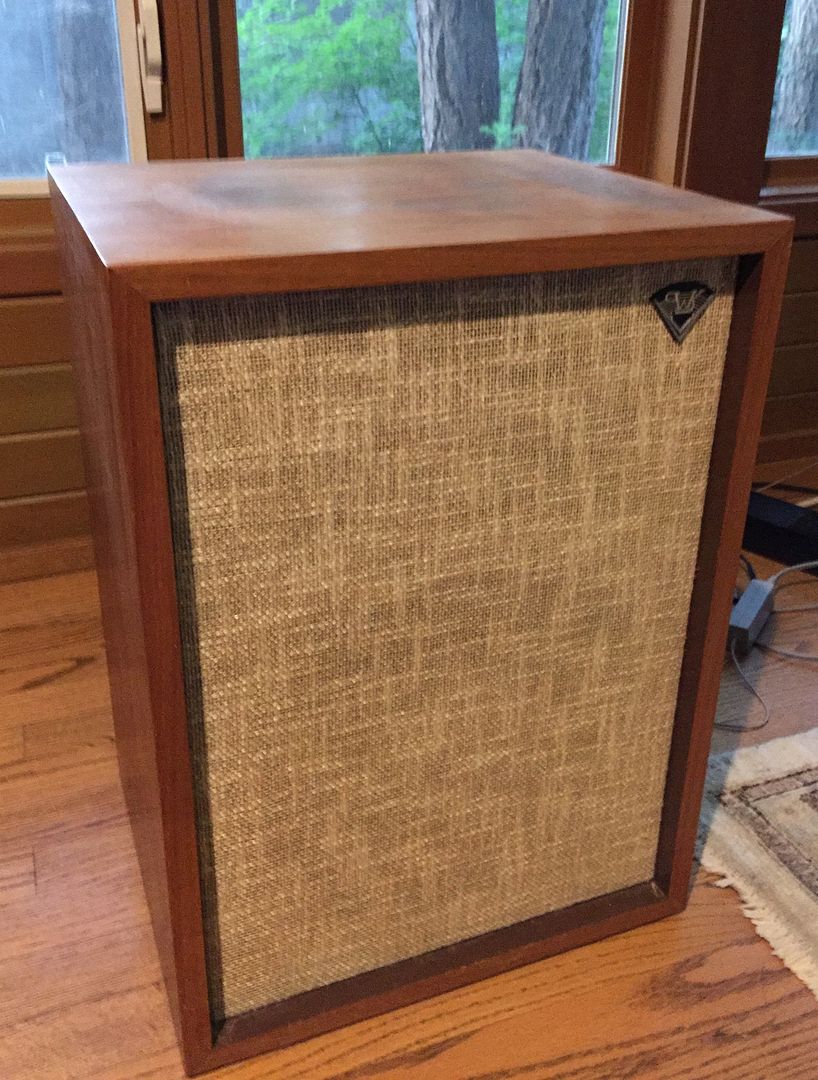
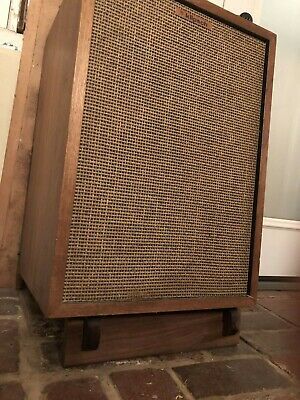
Yet we go to great lengths to have rounded corners or angles.
So even these should be terrible for edge diffraction, even though they are not sunk as deeply ...
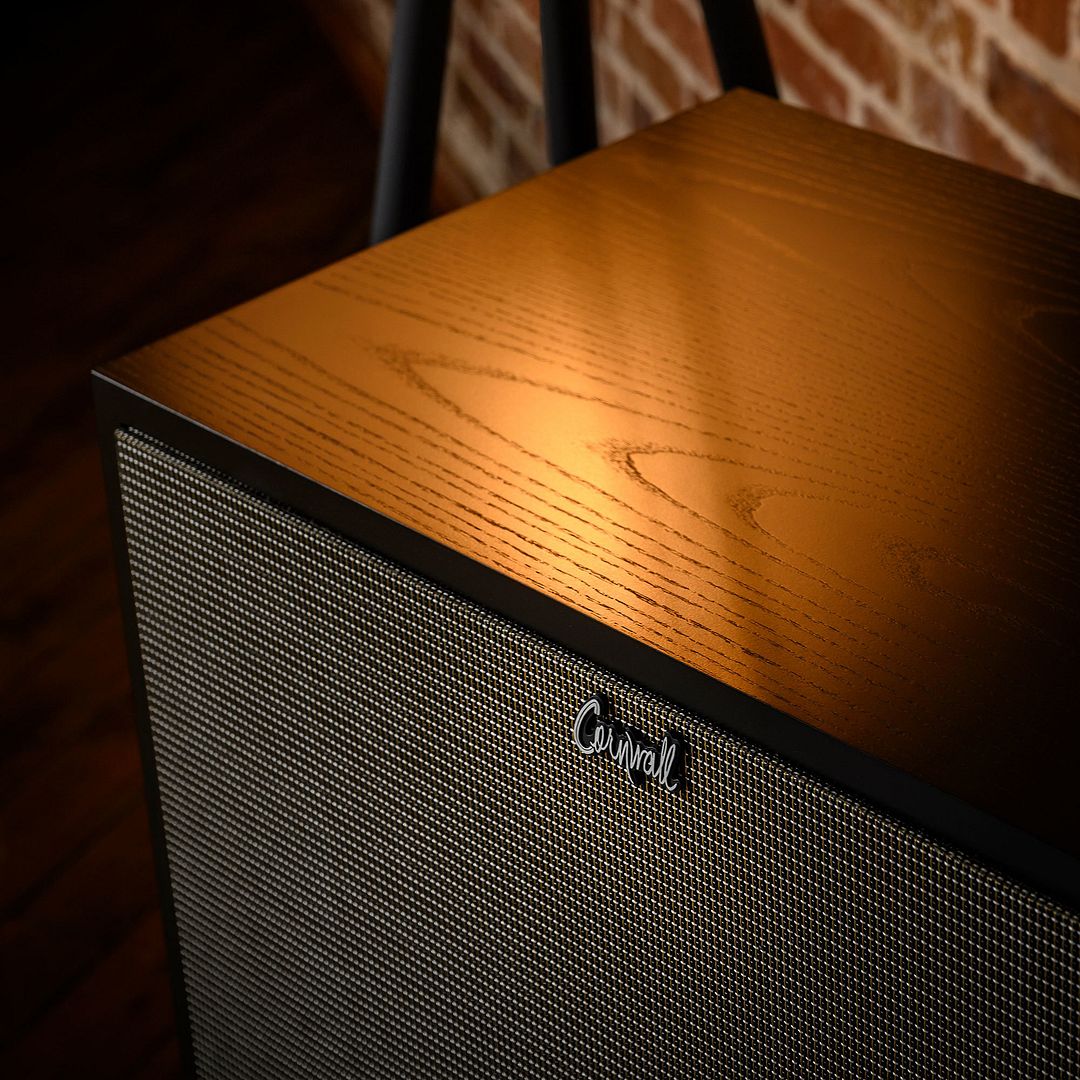

Doesn't this seem more proper?
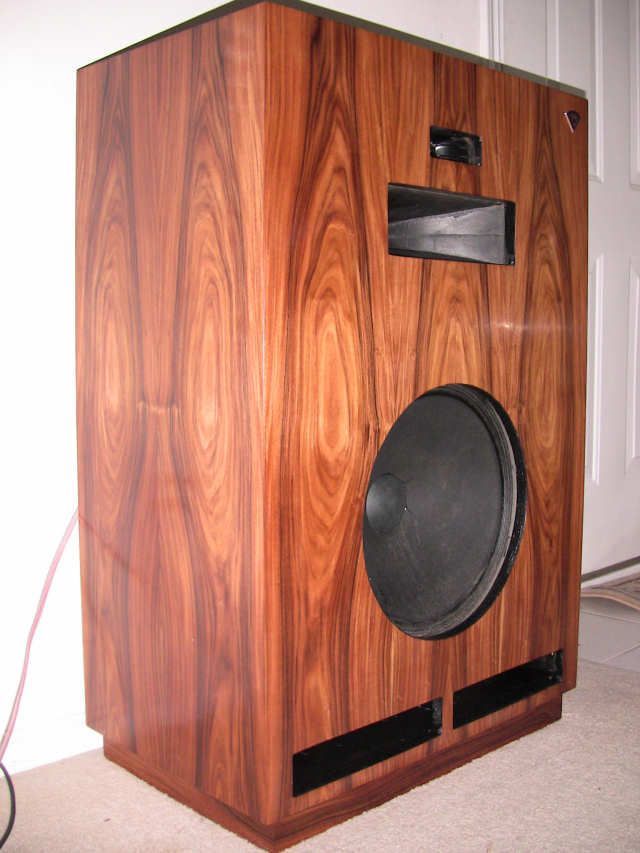
Can someone enlighten me? Thank you


Yet we go to great lengths to have rounded corners or angles.
So even these should be terrible for edge diffraction, even though they are not sunk as deeply ...


Doesn't this seem more proper?

Can someone enlighten me? Thank you
academia50 ... the woofer I used is posted above ... 15pr400.
The heil is the original with the smaller throat. Diaphragms are new.
"What is your FR and SPL?" Not sure what you want here? Those measurements I posted were taken on that day. Like I said quick and dirty ... in untreated room ... on the floor ... no other EQ used except for what I posted.
Work in progress so, when I get them done, I'll start a thread with all details.
I just see that the measurements you provide are those of the cabinet corrected with parametric equalization. 🙄
My mistake, but there was no "surprise" as I imagined.
Topic finished for me, my apologies to the OP.
I need help with edge diffraction and speaker grills. I see so many speaker cabinets with grills like these, counter sunk in.
Yet we go to great lengths to have rounded corners or angles.
So even these should be terrible for edge diffraction, even though they are not sunk as deeply ...
Doesn't this seem more proper?
Can someone enlighten me? Thank you
What are some good example of baffle design to improve diffraction
I need help with edge diffraction and speaker grills. I see so many speaker cabinets with grills like these, counter sunk in.
Can someone enlighten me? Thank you
Here is an simulation of the difference between a roundover, a chamfer, flush mounting and a 13mm step at the edge of a woofer where it meets the baffle.
With a sharp step you will get something similar to this although it will not be quite the same when on the edge of a wide baffle. I know which one I don't want to choose 🙂
This is helpful for mounting a driver, lol. Not sure how it correlates to the edge of the baffle. But thanks for reassuring me why I flush mount again. 😀
That is truly beautiful. But I have chosen an existing speaker design, which does not have those. Adding that large of a round will change the speaker's performance as measured. A 3/4" round is about as large as I can go and not make changes which are significant.
I plan on using magnetized grills. BUT I still want to know how recessing a baffle back where a grill can flush mount, or worse sit back a bit, is supposed to sound good.
I plan on using magnetized grills. BUT I still want to know how recessing a baffle back where a grill can flush mount, or worse sit back a bit, is supposed to sound good.
It is the same mechanism of diffraction and will give a similar effect on the response. The difference is the time delay of the reflection and that will depend on the baffle width and driver that you are using.Not sure how it correlates to the edge of the baffle.
To sum it up, controlling directivity and acquiring a ripple-free response is harder when you apply edges in your design (Olson, p19 I think? 😉 ).
Grills cut in with edges on the baffles to hold them in place are marked down as "done for looks" and is a dumb idea.
Yes, unless the grille is part of the solution. By use of an acoustically shaped frame.
Once we had foam grilles. Attached with velcro.
Once we had foam grilles. Attached with velcro.
I need help with edge diffraction and speaker grills. I see so many speaker cabinets with grills like these, counter sunk in.
Yet we go to great lengths to have rounded corners or angles.
So even these should be terrible for edge diffraction, even though they are not sunk as deeply ...
Doesn't this seem more proper?
Can someone enlighten me? Thank you
Think it like so. A verygood loudspeaker has frequency response within +-1.5db variation, this is from Toole book or from anywhere you try to find any definition of good loudspeaker the frequency response is pretty much the first thing referenced. This low variation is not possible to achieve if you have bad baffle diffraction since the delayed edge diffraction emitted sound interferes with the direct sound and creates peaks and dips that can be 6db (worst case) even if the best of the best drivers had flat response from 20-20kHz. So, seems reasonable to minimize diffraction doesn't it, if you are after good sound ?🙂 *
The important thing with this diffraction is that the diffraction and the related interference happens in the acoustic domain, after your electronics and transducers have done their work so there is nothing you can do about it in the crossover or in anywhere else than plan it in your design. The most important thing is to remember you listen the acoustic output, not the transducers or the electronics alone but the whole shebang diffraction included (and all the room and objects withing etc... ). A good loudspeaker has good acoustic output (good sound to ear), which the cabinet, drivers, crossovers all things work in tandem and help create together. Diffraction interference creates dips on axis and peaks off axis. The speakers you posted are beautiful but have about the worst diffraction interference possible, simply they don't have as good sound as they could have with less diffraction. But, many people don't mind about this, they listen with they eyes. If you are pouring loads of money into a loudspeaker in search of better than you ever Heard before this is one thing you definitely should take into account, the acoustic domain, the goodness you are after.
I did some simple experiments with VituixCAD diffraction simulator in May I think, but can't seem to find a single good post to link to 😀 You could search the forums and google about the diffraction, lots of papers done as well. Anyway, my simplified rule of thumb conclusion is that any baffle around the drivers make diffraction ripple on axis worse. By worse I mean that diffraction related ripple from a single transducer emitted sound has a bandwidth. Upper limit is defined by the size of the transducer and the lower bandwidth by the size of the baffle. The wider the bandwidth the more and severe ripple appears within the bandwidth according to the simulation results. Above the upper limit the driver beams and less sound travels along the baffle (short wavelengthts). On the lower limit almost all sound just wraps around the edge without introducing the secondary source (which happens when only part of sound power diffracts around the baffle edge), large wavelength compared to the size of the baffle. You can test this pretty easily with any diffraction simulator. Edge roundovers or chamfers help only as much as they reduce the flat front baffle around drivers otherwise they are too small. 1/4" roundover is fine if the baffle is narrow. One doesn't need roundovers at all if the baffle is as slim / small, as possible, size of the driver, can't get smaller than that. Hence the rule of thumb, do what ever to minimize flat front baffle around the drivers to better the diffraction interference.
All this is due to wavelengths, I've mentioned the word on every post just in case 😉
Another thing I mention on almost any post nowadays is the trade-offs and compromises. If you want beautiful box speaker with grille you can do it and be happy, just don't expect it to sound the best, it was your decision looks is more important than sound. If you want best sound, prepare to look an object that might not be as beautiful as it could optimally be, sound first. There is always a trade-off. Designing is pushing the trade-offs to areas that are not important in your design goal or at least don't do bad for your design or are fixable by other design choises. If it is sound you are after, the acoustic design should be so that any trade-offs the design leaves behind can be fixed with EQ for example. Diffraction ripple is not fixable with EQ but bafflestep loss is, so narrow baffle wins wide anytime. Cheerios 🙂
* diffraction ripple doesn't seem to appear in power response which is logical. One could then design the diffraction so that it doesn't have too bad peaks / dips on the listening axis and it shouldn't sound too bad, if listened on the design axis. Good loudspeaker sounds good for the friend sitting next to you as well so this is merely a hack fix. All in all, I don't have hard evidence if any of this diffraction is too bad, its just a point for optimization if you are after very good sound. Look for any loudspeaker manufacturer, the expensive models have diffraction taken into account.
Last edited:
Yes, unless the grille is part of the solution. By use of an acoustically shaped frame.
Once we had foam grilles. Attached with velcro.
Indeed. Given there is a bit of depth to work with it seems likely that with some design work it could possibly be made a touch better than the equivalent flat baffle with sharp edges. And would look better at least to my eyes. One for the to-do list perhaps?
Here is an simulation of the difference between a roundover, a chamfer, flush mounting and a 13mm step at the edge of a woofer where it meets the baffle.
With a sharp step you will get something similar to this although it will not be quite the same when on the edge of a wide baffle. I know which one I don't want to choose 🙂
Nice!
But how does e.g. chamfer release to flush? Is the camfered with flush mounted driver or not?
//
I would be cautious of this as in BEM simulation I see roundovers providing a beneficial effect on waveguides with already well terminated mouths. For standard towers or speakers with gradually increasing driver size the trapezoidal chamfer seems to be a very good solution for minimum diffraction.1/4" roundover is fine if the baffle is narrow. One doesn't need roundovers at all if the baffle is as slim / small, as possible, size of the driver, can't get smaller than that. Hence the rule of thumb, do what ever to minimize flat front baffle around the drivers to better the diffraction interference.
The flush in this simulation is a practical impossibility as the surround is flush with the baffle which would almost never be the case in reality. I use it as a control, it should be the best to judge the others by.Nice!
But how does e.g. chamfer release to flush? Is the camfered with flush mounted driver or not?
//
I did some simple experiments with VituixCAD diffraction simulator in May I think, but can't seem to find a single good post to link to 😀 You could search the forums and google about the diffraction, lots of papers done as well. Anyway, my simplified rule of thumb conclusion is that any baffle around the drivers make diffraction ripple on axis worse. By worse I mean that diffraction related ripple from a single transducer emitted sound has a bandwidth. Upper limit is defined by the size of the transducer and the lower bandwidth by the size of the baffle. The wider the bandwidth the more and severe ripple appears within the bandwidth according to the simulation results. Above the upper limit the driver beams and less sound travels along the baffle (short wavelengthts). On the lower limit almost all sound just wraps around the edge without introducing the secondary source (which happens when only part of sound power diffracts around the baffle edge), large wavelength compared to the size of the baffle. You can test this pretty easily with any diffraction simulator. Edge roundovers or chamfers help only as much as they reduce the flat front baffle around drivers otherwise they are too small. 1/4" roundover is fine if the baffle is narrow. One doesn't need roundovers at all if the baffle is as slim / small, as possible, size of the driver, can't get smaller than that. Hence the rule of thumb, do what ever to minimize flat front baffle around the drivers to better the diffraction interference.
All this is due to wavelengths, I've mentioned the word on every post just in case 😉
It makes me wonder how the Grimm Audio LS1 makes it work so smoothly with such a wide baffle. I believe its 500mm wide? The very large diameter roundover must help a lot...
Wide baffle is not bad. Ever seen GM's avatar, an Altec system iirc ( or most cinema loudspeakers from pioneer's area)? Those are not small at all.
Tmuikku point of view is one amongst others. His view is valid amongst a global approach.
If you see things differently other answer appear and are as validate.
My view on it is wide or very small. It's the inbetween which is problematic imho.
Food for thoughts:
Infinite-baffle
Tmuikku point of view is one amongst others. His view is valid amongst a global approach.
If you see things differently other answer appear and are as validate.
My view on it is wide or very small. It's the inbetween which is problematic imho.
Food for thoughts:
Infinite-baffle
Wide baffle is not bad. Ever seen GM's avatar, an Altec system iirc ( or most cinema loudspeakers from pioneer's area)? Those are not small at all.
Tmuikku point of view is one amongst others. His view is valid amongst a global approach.
If you see things differently other answer appear and are as validate.
My view on it is wide or very small. It's the inbetween which is problematic imho.
Food for thoughts:
Infinite-baffle
Valid points, however I was referring to the simulations of wide baffles that showed more diffraction.
I always thought wide baffles work like flat waveguides and large roundovers reduce the edge diffractions as the sound waves roll off the baffle and that the larger the roundover the smoother the off-axis response.
- Home
- Loudspeakers
- Multi-Way
- I'm building a $4000 speaker kit ... Which one?
